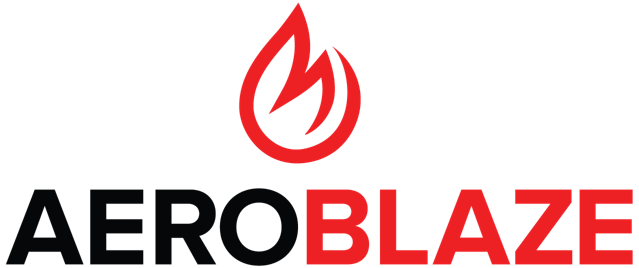Insulation Burnthrough
Insulation Burnthrough Test (for aviation)
The Insulation Burnthrough test is used to evaluate the burnthrough resistance characteristics of thermal and acoustic insulation material when exposed to a high-intensity open flame. It is most commonly used to show compliance with 14 CFR 25.856(b).
Test Methods

Test Summary
A test sample consisting of two insulation blankets is placed onto a test fixture at an angle of 60 degrees. The sample is exposed to a high-intensity open flame for four minutes. The pass/fail criteria are based on flame penetration and a maximum heat flux value on the backside of the sample.
Test Sample Requirements
Test samples must meet the following requirements:
Regulatory Requirements
This test is typically used to show compliance with the following U.S. Federal Regulations:
Note 1: In the aviation industry, 14 CFR may also be referred to as "FAR" (Federal Aviation Regulations). You may see the requirements listed as FAR 25.856, etc.
Note 2: The European Union Aviation Safety Agency (EASA) uses similar Certification Specifications (CS) which correspond to those in the CFR. For example, the EASA regulations are listed as CS 25.856, etc. These regulations may also be referred to as "JAR" (Joint Aviation Requirements) and listed as JAR 25.856, etc.
Products Requiring This Test
Thermal insulation and acoustic insulation in transport category airplanes with a passenger capacity of 20 or greater require the Insulation Burnthrough test. This requirement only applies to thermal/acoustic insulation material installed in the lower half of the airplane fuselage.
History of the Insulation Burnthrough Test
The Federal Aviation Administration (FAA) had been studying fuselage burnthrough since the late 1980’s and determined that by improving thermal/acoustic insulation, the time before an external fire penetrates the fuselage can be extended. In conjunction with other countries' Civil Air Authorities, research was undertaken to assess capability of airplane fuselages to resist burnthrough from an external fuel fire. That research demonstrated the importance of thermal/acoustic insulation in the burnthrough process and was documented in various reports. This research indicated that without making any other change to the airplane, improved thermal/acoustic insulation could delay the entry of a post-crash fuel fire by several minutes, thus prolonging the time available for escape. Conversely, the absence of thermal/acoustic insulation could allow earlier entry of a fire into the airplane. Although there were other factors identified that affect fuselage burnthrough (e.g.,fuselage skin, ventilation systems, etc.), the research demonstrated that the simplest and most effective approach to improving burnthrough resistance was to improve the fire resistance of the insulation.
Based on this research, a small-scale test method was developed using a modified kerosene oil burner, similar to those used for the Oil Burn for Seat Cushions and Oil Burn for Cargo Liners tests. This test method realistically simulated the thermal characteristics of a post-crash fire. The test stand and specimen were configured to simulate a small section of fuselage frames and stringers, with insulation material mounted over them. Fuselage skin was not represented in this test, since the delay in burnthrough afforded by the skin is not directly related to the performance of the insulation, and the test was intended to measure the performance of the insulation itself. In 2003, the FAA issued a Final Rule which added 14 CFR Part 25, Section 25.856 to the federal regulations. This section required thermal and acoustic insulation materials in the fuselage of transport category airplanes to meet more stringent test requirements. Part VII was added to 14 CFR Part 25, Appendix F to include the newly developed test method for determining the burnthrough characteristics of thermal/acoustic insulation materials.
In order to facilitate improvements to the test standard without constantly changing the CFR, the FAA published Report DOT/FAA/CT-99/15 "Aircraft Materials Fire Test Handbook" in 1990. The tests in this handbook are considered an acceptable equivalent to those in the CFR. The handbook was updated in 2000 to DOT/FAA/AR-00/12, with the Insulation Burnthrough test located in Chapter 24 of the handbook.
Sources: Federal Register Vol. 65, No. 183 / Federal Register Vol. 68, No. 147
Additional Resources
| Resource | Description |
|---|---|
| 14 CFR 25.856 |
Thermal/Acoustic Insulation Materials (Transport Category Airplanes) U.S. Regulations for FAR 25.856 at Amendment 25-111. |
| 14 CFR 25, Appendix F |
Appendix F to Part 25 (Transport Category Airplanes) U.S. Regulations, Criteria and Test Procedures. |
|
FAA Fire Test Handbook, Chapter 24 |
FAA Aircraft Materials Fire Test Handbook (DOT/FAA/AR-00/12); Chapter 24; Test Method to Determine the Burnthrough Resistance of Thermal/Acoustic Insulation Materials. This handbook provides an acceptable means of compliance with the relevant regulations. This is the preferred test method to find compliance with the listed regulations. |
|
FAA Advisory Circular AC 25.856-2A |
Thermal/Acoustic Insulation for Burnthrough Protection Provides guidance for the test method to determine burnthrough resistance of thermal/acoustic insulation materials installed in transport category airplanes. |
Ask the Experts

Stuck? Our experts will help you determine the best solution for your needs.
Contact Us